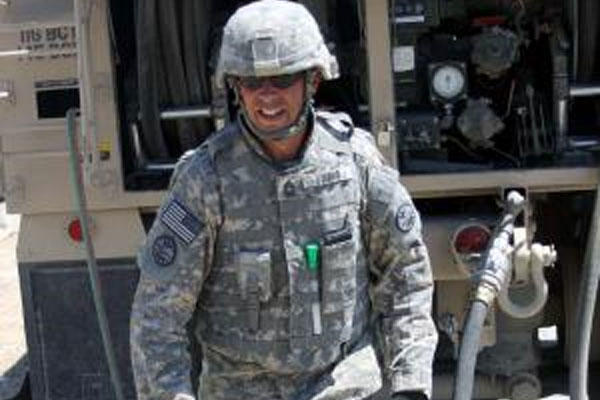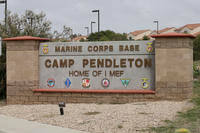ORCHARD COMBAT TRAINING CENTER, Idaho – Oregon Army National Guard Master Sgt. Daniel Ishaug calls it “tank mojo.”
And for most of July, Ishaug was in a front-row seat on the desolate, high-desert of Idaho to see whether the “mojo” was working for the guardsmen of Eastern Oregon’s 3rd Battalion, 116th Cavalry Regiment.
And for Ishaug, the Master Gunner for the 3rd Battalion, the “mojo” it is a deadly serious combination of elements that ensure a tank crew makes it through combat alive.
The effort to find the right mix of people, personalities and skills to create a proficient tank crew is a full-time job for Ishaug. Yet his role as the battalion’s Master Gunner, doesn’t end there. Not by a long shot. Ishaug must also manage a bewildering array of other priorities regarding tank gunnery for the Eastern Oregon citizen-soldier unit. Ishaug, assisted by other Master Gunners in the battalion, directs which ranges will be used for gunnery, when they will be operated, and the sequence the battalion tanks will utilize on each range.
And, in the end, it is on Ishaug – the man trained by the Army to know everything there is to know about the Abrams main battle tank – where the responsibility falls regarding how well the 20 or more tanks in the battalion do during their gunnery qualification test.
In short, he is the embodiment of the battalion’s soul when it comes to tanks.
Without a strong “tank mojo” the battalion’s tank crews may not succeed on the critical Table 6 qualification range. Table 6 is the final exam for the 3rd Battalion tankers. Each tank crew spends more than 10 days practicing on other ranges in preparation for the Table 6 qualification run. If they negotiate Table 6 – which consists of each tank firing on targets in a sequence of different scenarios – successfully then the nearly three-week long annual training is a triumph.
If not, then it is back to the drawing board.
And Ishaug, a La Grande, Ore., resident, doesn’t want to go back to the drawing board. Not unless he absolutely has to.
So everything – the ranges, the toil under the blistering southern Idaho sun, the long days and long nights on the high desert – comes down to “tank mojo.” And “tank mojo” can’t be taken for granted, Ishaug said. The “mojo” is a critical, albeit nebulous, factor for the tankers. The “tank mojo” Ishaug said, just doesn’t float on the thin air. It is something that is constructed in a methodical, painstaking process over many months.
“It all starts with who is compatible,” Ishaug said one day on a tank gunnery range last month.
He squinted into the bright glare of the desert sun as a M1A2 SEP tank from Hermiston’s Delta Company prepared to test-fire its big 120 millimeter main gun.
“Then you start making adjustments,” he said.
Many items are factored into those adjustments, he said. One key component is each tank crewman’s End of Term of Service – or ETS – date, the final day of their military contract. When a citizen-soldier hits their ETS date their obligation to the state and nation is over.
“So, when I do my gunnery plan I go out three years. Then I look at stuff like, who hangs out together after drill. Who lives out of town? I try to marry up people who live far away. So they are more likely to be able to train together at the same time,” he said.
The process Ishaug used for the tank crews is as old as the Roman Legions. And it revolves around a simple concept: building teams.
Each tank crew is a four-man team. To be successful each team must act in concert. They must know their jobs and know the strengths and weakness of their crewmates, Ishaug said.
Ishaug admitted that crew stability – the ability of a specific crew to stay together for a long time – is often a goal difficult to achieve.
“If you get a crew together for two or three years you are lucky,” he said.
If everything goes just right – if the crews mesh, if each tank company navigates each practice gunnery range efficiently, if the weather holds and tanks are not hampered by mechanical problems – then the battalion falls into what Ishaug terms “good gunnery.”
“Then we are into healthy competition between companies and crews to see who can be the best,” he said.
Ishaug also plays a pivotal role in teaching tank crews the importance of tank gunnery.
“As a master gunner, we are taught that knowledge is something to give, not to keep,” he said.
One of his biggest challenges is implanting the right mind set into his tank crews. Targets, for example, are plywood replicas of armor vehicles and enemy troops. But to Ishaug they are more than just chunks of plywood out on the high desert. They are, in his mind, the enemy. And that enemy has one focus: to kill Eastern Oregon tankers.
“I tell them, ‘look at it as if I don’t hit it I die,’” he said. “It is not just shooting a plywood target. So if you, in your mind, are just happy doing OK against the enemy, I don’t know what to say to that. Your mind has to be in the tank,” he said.
Ishaug also promotes safety. Splashed against the backdrop of the M1A2 SEP main battle tank, safety may not seem like a key issue. After all, the Abrams tank is designed to kill. Not be safe. Yet Ishaug said safety on the ranges is paramount.
“That tank does not care who it hurts. And I understand you can only put so many safety guards on a tank. But we error on the side of safety,” he said.
Ishaug said gunnery is the single most important aspect to training tankers. While he conceded learning the art of maneuver is important too, he said gunnery must come first.
“Look, you can shoot your way out of a bad maneuver. But you can’t maneuver your way out of a bad shoot,” he said.





























